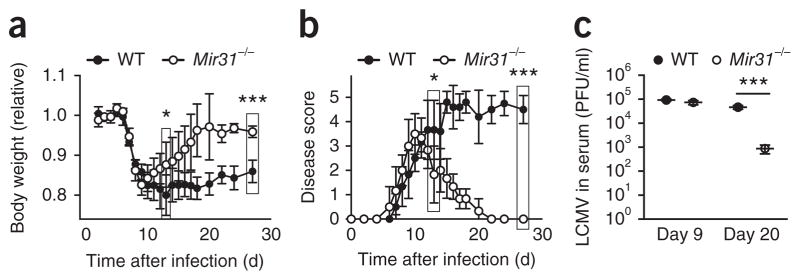Figure 5.
Mir31−/− mice undergo a faster recovery and show better viral control in a chronic-LMCV-infection model. (a) Body weight of wild-type mice (n = 4) and Mir31−/− mice (n = 6) (key) infected intravenously with LCMV clone 13 (1 × 106 plaque-forming units), assessed daily before (day 0) and after infection (time, horizontal axis); results are presented relative to original body weight (day 0). *P = 0.02 (day 13) and ***P = 0.003 (day 27) (unpaired two-tailed Student’s t-test). (b) Disease scores of wild-type mice (n = 4) and Mir31−/− mice (n = 6) as in a. * P = 0.024 (day 13) and ***P = 4.5 × 10−8 (day 27) (unpaired two-tailed Student’s t-test). (c) Viral load in the serum of mice as in a (n = 3 per group), assessed by plaque assay at days 9 and 20 after infection (horizontal axis) and presented as plaque-forming units (PFU) per ml serum. Each symbol represents an individual mouse; small horizontal lines indicate the mean (± s.d.). ***P = 0.0008 (unpaired two-tailed Student’s t-test). Data are representative of two experiments (mean ± s.d. in a,b).

